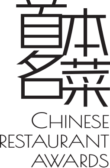By Mia Stainsby
In Richmond, we have the mother lode of Chinese
restaurants in North America. Some say we have the best Chinese food in
the world.
And yet, regrettably, 99.9 per cent of the diners are
from within the Chinese community. What’s wrong with this picture?
Isn’t it time we woke up and smelled the dim sum?
With the Richmond Summer Night Market getting into
high gear (it started up last weekend) and this being the Victoria Day
weekend, it’s a good time to venture past the invisible force shield
into the vibrant Chinese food scene in Richmond.
Brendan Mathews and his family (wife and two
daughters) are part of the .01 per cent of Caucasians diners. They eat
at Chinese restaurants several times a week for the same reason the
Chinese community does: incredible value, delicious food and family
time. "It’s uncommon to see another table of Caucasians," Mathews says.
"Occasionally, you’ll see a Caucasian who’s married to an Asian." As for
the Western chain-style restaurants where he sees most non-Chinese
dining, he’s flummoxed. "I wouldn’t go if they paid me. The food isn’t
cooked with care; the operators don’t seem to have interest in putting
their best foot forward," he says. The better Chinese restaurant
operators (not necessarily the most expensive) compete feverishly for
fickle customers and chefs step up with passion, pride and new
dishes."If you’re a food person, you can recognize quality cooking in
any idiom. Chinese chefs are proud of what they do and try the best they
can. The quality is 10 times better [than the popular western chains]."
(Brendan Mathews and family at Dinesty restaurant.)
(Food at Dinesty restaurant.)
He has lived in Richmond for 20 years. "For the first
five years, we were a little reticent then we kept going back and
looking at what people were having. We’d have dishes we were comfortable
with and mix in something new each time." He has now become such a
passionate fan, he is one of the judges for the Chinese Restaurant
Awards.
Stacey Chyau, of Tourism Richmond, says after 2000,
the Richmond’s Chinese restaurant scene began to change. Many Hong Kong
immigrants moved back after 1997 came and went without incident but a
new wave of wealthy, educated immigrants from mainland China began to
arrive, creating demand for regional variations. While most Chinese
restaurants are still Cantonese, the trend is changing because demand is
changing, she says.
About 65 per cent of the population of Richmond are
of Asian descent and 40 per cent are Chinese. The importance of food and
family in the Chinese community is evident as you drive through Golden
Village, the central commercial area of Richmond. The restaurant
activity is astounding. Three blocks along Alexandra Road, skirting the
Golden Village is fondly called Eat Street for the sheer density of
restaurants lining three blocks.
There is also the Summer Night Market, with its riot
of street foods, sold from stalls. There’s also three food trucks but
when the city’s busting at the seams with good-value places to eat, the
thinking seems to be ‘who needs them?’ But if you think you do, the
three food trucks sell Japanese fare at located at 8740 Charles St.,
across from the Bridgeport Canada Line station. (Tenku Bakudanyaki sells
Japanese fritters; Shoryumen sells ramen and Fumisen sells sushi
cones.)
David Ngan, manager of Fisherman’s Terrace, a
long-time fixture in the pantheon of Richmond restaurants, firmly
believes Richmond has better restaurants than in China, including Hong
Kong. "We are more concerned about health standards here. It’s the best
in the world and the quality of ingredients is very good," he says. And
while we don’t have quite the variety of seafood and meats that they do
in China, we do better with what we have in terms of quality and
creative cooking. "It makes the chefs be more creative and they keep on
developing their dishes." Locals, he says, are very open to trying new
things.
Craig Stowe, a founder and director of the Chinese
Restaurant Awards says Metro Vancouver definitely has the best Chinese
food outside of China and the beef and pork are of much better quality
than in China. "Chefs are more creative with the meats because they’re
of much higher quality than China. Traditioanl, a high-end banquet in
China is about fresh seafood, not about great cuts of pork and beef."
"Food is foremost to the Chinese," he says. "They
spend a lot of money on eating. Life is about
food-family-finance-future, with future meaning education. But they want
their food at a good price."
The major distinction on the Chinese food map is the
Northern/Southern split. Northerners eat both rice and noodles, heartier
foods, dried and pickled goods – reflecting a colder climate and
regions without access to fresh fish or ingredients all year. The South,
including the Cantonese, have access to fresh produce and seafood
year-round the the cuisine is more light and refined and sing the
praises of bright, fresh, flavours.
"The demand for freshness is extremely high," says
Stowe. "The 100 Mile Diet – that’s the kind of quality we’re talking
about. They want fresh, and alive, if possible. Seasonality is central."
Cantonese food tends to be the most expensive because of the obsession
with freshness and quality and focus on seafood.
For Lee Man, a food writer and Chinese Restaurant
Awards judge, says Cantonese cooking is about being unobtrusive.
"There’s no need for preserving or masking. It’s really about the
ingredient." Chefs from abroad have embraced local ingredients like
Alaska king crab (Sun Sui Wah restaurant goes through 2,000 pounds of it
per month when it’s in season) and geoduck.
Rice used to be a staple in Cantonese cuisine but no
more, Man says. "If you look around, most people aren’t ordering rice
with meals anymore. They’ll have a starch but not rice."
He says Chinese chefs at the notable restaurants are
passionate and extremely competitive. "They’re very secretive about
their recipes. Staff who are starting out show up super early because
the executive chef will be there to hide what he does."
He knows of one "really, really respected chef" (at
Shiang Garden) who has been working to perfect a soy sauce recipe to go
with a braised pork belly recipe for years. "He starts with a premium
soy sauce and keeps doctoring it to make it better."
Another chef (at Sea Harbour restaurant) works with squab farmers in the Fraser Valley to grow poultry to his specification.
Man adds Taiwanese food into the Richmond mix. "It’s
reflective of how the Taiwanese eat. It’s more casual, like street food
menus and dumplings. But there are more sophisticated ones like Dinesty.
It’s noodle-driven and casual." And of course, there are the food
courts at the various Richmond Malls.
Stowe sees the Richmond food scene as the perfect
storm, a confluence of local high-quality ingredients, a wealthy,
educated class of Chinese immigrants with demanding palates, and their
equal demand for value. "Part of their reason for buying second homes in
Vancouver is the culture of good food and education. That’s basic. It’s
not the houses or weather."
There are about 600 Chinese restaurants in Metro
Vancouver with most in Richmond and Vancouver. "It’s amazing!" Stowe
says. "And the most important thing about Richmond’s restaurants is the
incredibly high quality and value. They want the best at a good price
and heavy competition creates the perfect storm."
At 8 p.m. On Thursdays, Fridays and Saturdays, it’s
bumper to bumper traffic in Richmond, Stowe says. "Those with big
parking lots do well."
His reason for jump-starting the Chinese Restaurant
Awards was to alter change that 99.9 per cent stat, to bring in a wider
community of diners to the best of Chinese restaurants in the Vancouver
area. "When a restaurant gets an award, there’s about a 20 per cent
increase in business and a big chunk is from the Caucasian community,"
he says.
If, as Man thinks, Caucasians in Vancouver are
reticent because driving over the bridge is a psychological barrier, he
says there are great restaurants within walking distance of the Canada
Line. Here are his marching orders: From the Aberdeen stop, go to Sea
Harbour, Fisherman’s Terrace and Northern Delicacy; from the Lansdowne
stop, you can walk to Sun Sui Wah, Jade Seafood, Alexandra Road
(three-blocks of ‘Eat Street’), Dinesty and Shanghai Wonderful; and
you’ll find Kirin Seafood and Shanghai River near the Brighouse stop.









